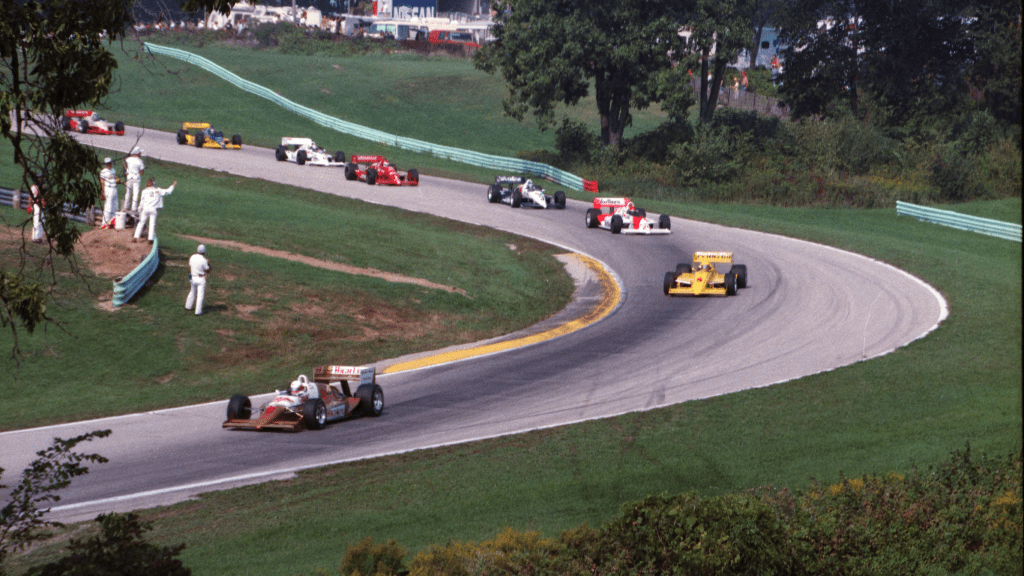Exploring the Thrill of Formula 1 Racing
Formula 1 racing mesmerizes millions with its blend of speed, precision, and technology. The intense roar of the engines, reaching up to 15,000 RPM, permeates the air and captivates the audience.
The sight of cars traveling at speeds over 200 mph showcases the pinnacle of automotive engineering.
The Role of Technology
Technology plays a crucial role in Formula 1 racing. Teams invest millions in research and development to enhance car performance. Innovations from advanced aerodynamics to hybrid power units define the competitive edge.
For instance, the Mercedes-AMG team utilized their MGU-K kinetic energy recovery system, dramatically improving lap times.
Driver Skills and Strategy
Driver skills and strategy are essential in Formula 1. Precision driving, rapid decision-making, and physical endurance distinguish champions.
Drivers like Lewis Hamilton and Max Verstappen epitomize these qualities, consistently performing under immense pressure. Strategic elements such as:
- tire management
- undercuts
often determine race outcomes.
Pit Stops and Teamwork
Pit stops illustrate the importance of teamwork in Formula 1. In under three seconds, a crew of mechanics changes tires and addresses any car issues. Efficient pit stops, like Red Bull Racing’s record-breaking 1.82-second stop, can significantly impact a race’s result.
Global Reach and Events
Formula 1 has a global reach, with races held on five continents. Iconic events like the Monaco Grand Prix and the Italian Grand Prix at Monza attract legions of fans. The diverse circuits, each with unique characteristics, add to the sport’s excitement.
Constant Innovation
Constant innovation in Formula 1 keeps the sport dynamic. Teams push boundaries to gain a competitive advantage. The introduction of new regulations, such as the 2022 aerodynamic changes, continually reshapes the race landscape. This relentless quest for improvement reflects in every season.
Exploring the thrill of Formula 1 racing unveils a world where technology, skill, and strategy converge to create unparalleled excitement.
The History of Formula 1
Formula 1, often abbreviated as F1, has a rich and storied history. Established in 1950, it has grown to become the pinnacle of motorsport, known for its cutting-edge technology and global appeal.
Roots and Early Days
Formula 1’s origins date back to the early 20th century. Initially, Grand Prix motor racing was an informal and dangerous sport. The first official Formula 1 World Championship race took place at Silverstone, UK, on May 13, 1950. Giuseppe Farina won the inaugural title driving for Alfa Romeo.
The rules in early F1 were minimal, focusing more on speed than safety. Cars often reached dangerous speeds without modern safety protocols. The early years saw iconic races at tracks like Monaco, Spa-Francorchamps, and Monza, which still host F1 events today.
Evolution of Technology and Safety
Technological advancements have defined Formula 1’s progression. In the 1960s, teams began experimenting with aerodynamics, leading to innovations like the introduction of wings for better downforce. Lotus, under Colin Chapman, pioneered these changes, transforming car design and performance.
Safety also became a growing concern. The deaths of drivers such as Ayrton Senna in 1994 highlighted the need for better safety measures. This led to significant changes including the introduction of the HANS device, improved crash barriers, and better track designs.
The modern era continues to push boundaries with hybrid power units, advanced telemetry systems, and rigorous safety standards. Improvements like the HALO device, designed to protect drivers’ heads, reflect F1’s commitment to combining speed with safety.
Iconic Circuits in F1 Racing

Certain circuits in Formula 1 embody the essence of the sport, offering unparalleled challenges and unique history.
Monaco Grand Prix
The Monaco Grand Prix stands out as the crown jewel of the F1 calendar. Nestled within the streets of Monte Carlo, this circuit has been a staple since 1950. Drivers face narrow streets, sharp corners, and elevation changes.
The track’s layout leaves no room for error, making overtaking incredibly difficult. Success in Monaco is often attributed to precision and skill rather than pure speed. Famous corners like Casino Square and Rascasse add to its allure.
The harbor fills with yachts, and the atmosphere buzzes with glamour, attracting celebrities and racing enthusiasts alike.
Silverstone Circuit
Silverstone Circuit holds a revered place in F1 history. It hosted the first official Formula 1 Grand Prix in 1950. Located in the UK, Silverstone is known for its high-speed layout, featuring iconic corners like Copse, Maggots, and Becketts.
The track tests both the car’s aerodynamic capabilities and the driver’s bravery.
Over the decades, it has seen numerous upgrades but retained its challenging nature. Celebrating British motorsport, Silverstone often witnesses large crowds, adding to the electrifying atmosphere. It’s a true test of technical prowess and driving skill.
What Makes F1 Racing Unique?
Formula 1 racing stands out due to its blend of cutting-edge technology, intricate team strategies, and elite driver skills.
The Role of Technology
In F1 racing, technology plays a pivotal role. Engineers constantly push the limits of aerodynamics, power units, and materials. Modern F1 cars, for instance, generate downforce that allows them to corner at extraordinary speeds.
Advanced simulation tools help teams forecast race scenarios, optimize setups, and plan strategies.
The integration of the hybrid power unit, combining internal combustion engines with electric motors, exemplifies F1’s focus on efficiency and performance.
Team Strategies and Driver Skills
Team strategies in F1 are both complex and critical to success. Every decision, from tire selection to pit stop timing, impacts the race outcome. Teams analyze data in real-time, adapting strategies based on track conditions and competitor actions.
Driver skills complement these strategies, with only the most skilled drivers able to consistently perform at the peak level required. Precision in braking, acceleration, and maneuvering distinguishes top drivers.
Mental resilience enables them to make split-second decisions under immense pressure, illustrating the demanding nature of F1 racing.
Impact of F1 on Car Technology and Safety
Formula 1 racing has a significant impact on automotive technology and safety. The innovations and safety measures developed in F1 often trickle down to consumer cars.
Innovations Inspired by F1
Many automotive innovations originate from F1. Carbon fiber, widely used in F1, results in lighter and stronger car components. Due to its durability, it’s now common in high-performance vehicles.
Turbocharging and hybrid technology, initially tested in F1, improves fuel efficiency and power in everyday cars. Active suspension systems, originally designed for F1, enhance vehicle stability and handling.
Safety Measures and Their Influence on Consumer Cars
- Safety improvements pioneered in F1 enhance road car safety.
- The introduction of the HANS (Head and Neck Support) device significantly reduces neck injuries and is now mandatory in many other racing series.
- Crumple zones, designed to absorb impact in crashes, were honed in F1 before becoming standard in consumer vehicles.
- The development of advanced braking systems like ABS (Antilock Braking System) and traction control stemmed from F1, ensuring better driver control during emergency stops.

